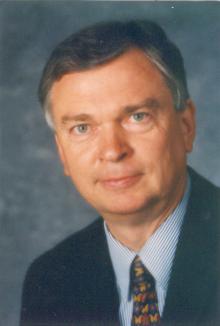VIPromCom-2002
INVITED SPEAKERS
(click
on the link for details)
JPEG 2000
Professor
K. R. Rao
Electrical
Engineering Department
University of Texas at Arlington, Texas, USA
Abstract:
The invited paper
covers JPEG-2000 (Joint Photographic Experts Group) and MPEG-7 (Moving
Picture Experts Group). JPEG-2000 has become a committee draft (CD)
in Dec. 1999 with International Standard (IS) in Dec. 2000. JPEG-2000
is designed to provide rate-distortion and subjective image
quality performance superior to current IS (JPEG and JPEG-LS). It
also provides functionalities that current standards can neither
address efficiently nor address at all i.e., both lossless and
lossy compression, encoding of very large images, progressive
transmission by pixel accuracy and by resolution, robustness to
channel noise, region of interest coding and random codestream
access. It is also designed to address the requirements of very
different kinds of applications, e.g. internet, color facsimile,
printing, scanning, digital photography, remote sensing, mobile
applications, medical imagery, digital libraries and e-commerce.
The paper will describe the algorithmic details followed by
demonstration of reconstructed images. Access to source codes (C
and JAVA), test data and IS documents will be provided.
About the
Invited Speaker:
K. R. Rao received
the Ph. D. degree in electrical engineering from The University
of New Mexico, Albuquerque in 1966. Since 1966, he has been with
the University of Texas at Arlington where he is currently a
professor of electrical engineering. He, along with two other
researchers, introduced the Discrete Cosine Transform in 1975
which has since become very popular in digital signal processing.
He is the co-author of the books "Orthogonal Transforms for
Digital Signal Processing" (Springer-Verlag, 1975), "Fast
Transforms: Analyses and Applications" (Academic Press, 1982),
"Discrete Cosine Transform-Algorithms, Advantages,
Applications" (Academic Press, 1990). He has edited a
benchmark volume, "Discrete Transforms and Their
Applications" (Van Nostrand Reinhold, 1985). He has coedited
a benchmark volume, "Teleconferencing" (Van Nostrand
Reinhold, 1985). He is co-author of the books, "Techniques
and standards for Image/Video/Audio Coding" (Prentice Hall)
1996 and "Packet video communications over ATM networks"(Prentice
Hall) 2000. He has coedited a handbook " The transform and
data compression handbook," ( CRC Press, 2001). Some of his
books have been translated into Japanese, Chinese, Korean and
Russian. He has conducted workshops/tutorials on video/audio
coding/standards worldwide. He has published extensively in
refereed journals and has been a consultant to industry, research
institutes and academia. He is a Fellow of the IEEE.
Image Processing and Coding for an Immersive
Teleconferencing System
Professor
Ralf Schaefer
Image
Processing Department
Heinrich-Hertz-Institut, Berlin, GERMANY
Abstract:
It is generally
agreed that video conferencing today is limited in its support of
natural human-centered communication. Body postures and subtle
movement, gaze direction, room acoustics, and joint object/data
interactions are often misrepresented, lacking, or wholly absent
within these systems. To obviate these shortcomings, a so-called
Immersive Tele-Conferencing system is being developed at HHI.
Following the principle of a shared table, it subtends a class of
teleconferencing systems enabling conferees located in different
geographical places to meet around a virtual table, appearing at
each station in such a way to create a convincing impression of
presence. This system will enable the participants to make use of
rich communication modalities as similar as possible to those
used in a face-to-face meeting (e.g., gestures, eye contact,
realistic images, correct sound direction, etc).
In this he paper the general system approach as well as the main
steps in signal processing, i.e. segmentation, disparity
estimation, view synthesis, and MPEG-4 coding as well as the MPEG-4
system layer and the used IP stacks will be presented.
Furthermore the architecture of the real real-time implementation
will be explained.
About the
Invited Speaker:
Ralf Schaefer
received his Dipl.-Ing. and Dr.-Ing. degrees both in electrical
engineering from the Technical Unversity of Berlin in 1977 and
1984 respectiveley. In October 1977 he joined the Heinrich-Hertz-Institut
(HHI) in Berlin and since 1989 he is head of the Image Processing
Department, where he is responsible for 53 researchers and
technicians, about 40 students and about 25 R&D projects. The
main R&D fields are Image Processing, Image Coding,
Multimedia Communication over (wireless) Internet, Immersive
Telepresence Systems and RT-SW implementations and HW design
including VLSI.
He participated in several European research activities like COST,
EUREKA, RACE, ACTS and IST. He was chairman of the Task Force on
"Digital Terrestrial Television - System Aspects" of
the DVB project, which specified the DVB-T standard. Currently he
is member of the German "Society for Information Technology"
(ITG), where he is chairman of experts committee "TV
Technology and Electronic Media" (FA 3.1) and chairman of
the experts group "Digital Coding" (FG 3.1.2).
Furthermore he is member of the German "Society for
Television and Motion Picture Technology" (FKTG), where he
belongs to the URTEL Award Committee.
Back
to VIPromCom-2002 Home Page


